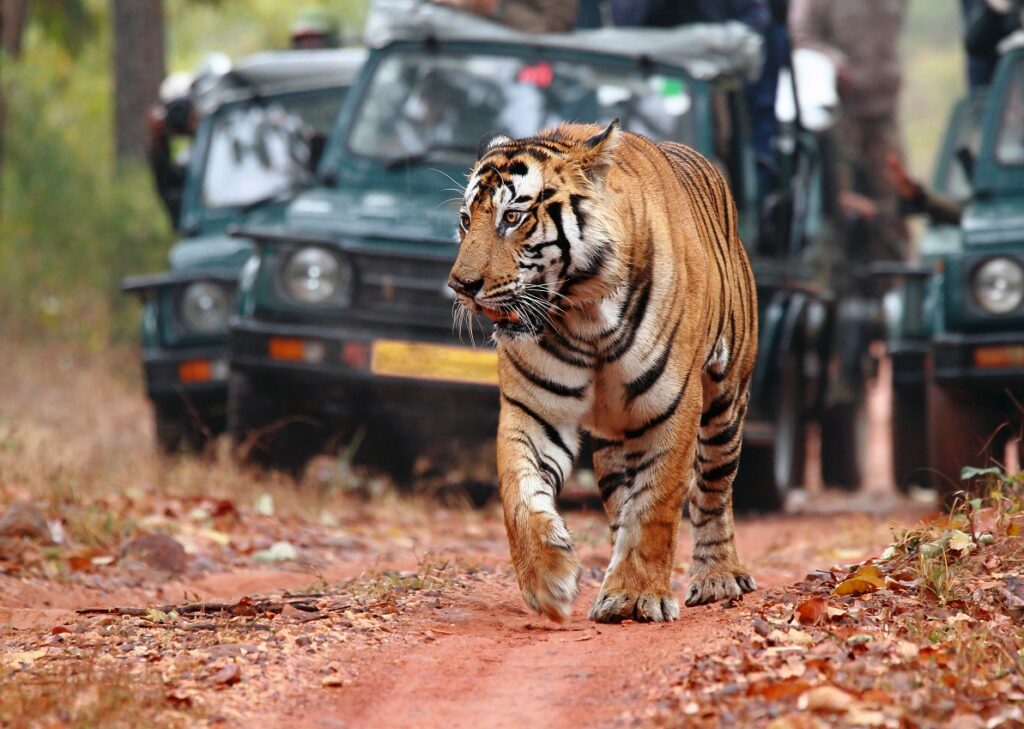8-Day Private Golden Triangle Tour with a Ranthambore Wildlife Safari From Delhi

8-Day Private Golden Triangle Tour with a Ranthambore Wildlife Safari From Delhi
- Skip The Line
- Duration : 8 days (approx.)
- Free cancellation
- Instant confirmation
- Private Tour
Overview
The bustle and buzz of India can often be overwhelming for first-time visitors. Enhance your experience of India and skip the hassle of advance planning on a private 8-day tour that ensures you receive the undivided attention of your guide. Without having to arrange transfers, activities, or accommodation yourself, you’ll travel between UNESCO World Heritage sites in the Golden Triangle with ease and benefit from local insight into Indian culture and tradition.
- Eliminate the stress of advance planning on a private 8-day tour of India
- A perfect cultural introduction for first-time visitors with limited time
- Accommodation, transfers, and a daily breakfast are included
- Tick off highlights such as Ranthambore National Park and Jaipur included
Itinerary
New Delhi
A representative of the tour operator will meet you at the airport and assist you with your transfer to the hotel and check in procedures. If time permits, you may step out for a short visit to the Akshardham temple.
Red Fort
● Red fort – It is UNESCO world heritage site. It was main residence of the emperors of the Mughal dynasty.Chandni Chowk
● Chandani Chowk – Walk in tour to spice and jewel market near Chandani chowk
Friday Mosque (Jama Masjid)
● Jama Masjid-In the year 1656, the Masjid was constructed by Shah Jahan and one of the largest Mosque in India and this was also built by Shah Jahan.
Raj Ghat
● Rajghat: Marks the spot where Mahatma Gandhi was cremated following his assassination.
Humayun’s Tomb
● Humayun Tomb – It was nine years after the death of Humayun. Most notable features are the garden space (Chaharbagh) with pathways water channels, well proportional mausoleum topped by double dome.
India Gate
● India Gate (Drive away): Commemorates the 70,000 Indian soldiers who lost their lives fighting for the British Army during the World War I.
Admission Ticket Free
07. Parliament House
● Parliament House (Drive away) – Indian parliament building. It is circular shaped building opened in 1927.
Admission Ticket Free
Qutub Minar
● Qutub Minar – A 73 meter tall minaret that forms part of the Qutab complex, a UNESCO World Heritage Site, tapering tower of five storey, made of red sandstone and marble. It has a spiral staircase of 379 steps.
Agra
You leave Delhi to visit the splendor and the monument of marvel on the Indian sub-continent- the Taj Mahal in Agra. Drive via Sikandra and also visit another World Heritage Site, the Agra Fort, another brilliant example of rich architecture during the reign of Akbar. Before retiring to the hotel you will visit the Itmad-ul-Daulah, the beautiful tomb of a Persian adventurer.
Admission Ticket Free
Taj Mahal
Taj Mahal was constructed by Emperor Shah Jahan in memory of his wife Mumtaz Mahal. Taj is certainly the most prevalent sight in Agra, with the most achingly stunning architectural accomplishments globally, and it portrays enduring love.
Agra Fort
Agra Fort” that includes numerous buildings like the Moti Masjid and Musanman Burj was raised by Emperor Akbar in 1565 A.D, is where Shah Jahan is believed to have died after being imprisoned.
Ranthambore National Park
Leave for Ranthambore, home to one of Asia’s best wildlife sanctuaries. Experience some of the most breathtaking sights and sounds of the wildlife in India. Check in to a hotel on arrival. Retire to the hotel for an early morning safari at the Ranthambhore Tiger Reserve.
Ranthambore Tiger Reserve
You’ll set off early for the Tiger Sanctuary to see one of the most agile, feared and endangered cats in the world. Home to a large tiger population, sighting these magnificent creatures is no difficulty. The afternoon is free to visit nearby temples and the Ranthambhore Fort, one of the oldest forts in Rajasthan, dating back to the 10th century. After your long day of traveling, you’ll be taken back to your hotel to retire for the evening.
Jaipur
Admission Ticket Free
Amber Palace
You’ll start your day by visiting the Amber fort, a few miles outside the city. You’ll get to tour the fort in luxury. The rest of the day will consist of tours to the opulence the princely state still boasts, the elegant palaces and royal chambers, browse through priceless artifacts at the museum and tour the City Palace which is still a royal residence. Then, return to the hotel for the night.
Hawa Mahal – Palace of Wind
The Palace of the Winds, or Hawa Mahal, was built by Maharaja Sawai Pratap Singh for royal women to view the busy streets of Johari Bazaar, while staying veiled behind the jharokhas. Go atop the five-storey building to take in that view.
City Palace of Jaipur
Once the seat of Jaipur’s Maharaja and today a rich museum, the main citadel of Jaipur’s City Palace is a marriage of Mughal and Rajput architecture. The Palace complex is home to historical attractions like Mubarak Mahal, Chandra Mahal, Diwan-I-Khas, Diwan-I-Aam and Maharani Palace.
Jantar Mantar – Jaipur
Jantar Mantar, the largest sundial in the world, is a World Heritage Site and definitely a must-not-miss on your trip to Jaipur. A guided tour (30 minutes to 1 hour) is recommended, and would cost Rs. 100. 1 hour • Admission Ticket Not Included
Albert Hall Museum
One of the oldest museums in Jaipur, it is also known as Government Central Museum and was built by Maharaja Sawai Ram Singh II in 1868. Boasting of the Indo-Saracenic architecture, the design of the museum is quiet similar to the Victoria and Albert museum in London.
Diwan-e-Khas Hall of Private Audience
Diwan-e-Khas (Hall of Private Audience) is considered as the most magnificent part of the glorious Amer Fort. The Diwan-e-Khas was the private audience hall of the maharajas who would covene with their advisors and courtesans here. The hall is adorned with marble floors and boasts of the most intricate architectural patterns. The jewels in the crown of the Diwan-e-Khas are the two huge silver containers on display here. The beautiful silver containers are registered with Guinness Book of World Records as the largest silver vessels in the world.
Jal Mahal
Literally meaning as ‘Water Palace’, Jal Mahal is located amidst the Man Sagar Lake and was constructed by Sawai Pratap Singh in the year 1799. The beauty of the palace lies in its location as the palace cum hotel is standing in the centre of the lake. The palace architecture boasts of a typical Rajput and Mughal style which is quite similar to that of Amer Fort. Made in red sandstone, the palace is actually five-storeyed where only the top story is visible (rest are submerged under water).
New Delhi
After breakfast at your hotel in Jaipur, you will be driven to Delhi where you will be dropped off at either your hotel or the airport. This will conclude your tour.
